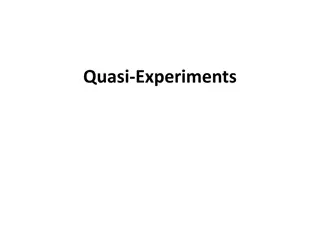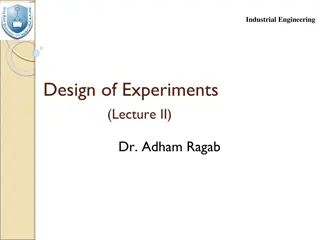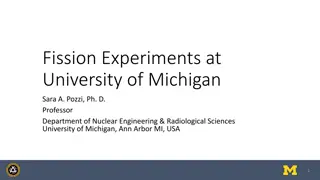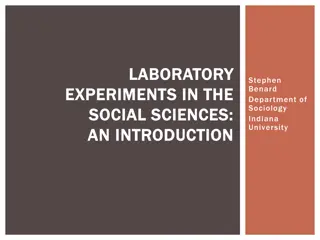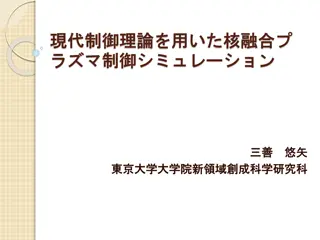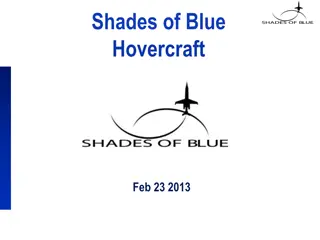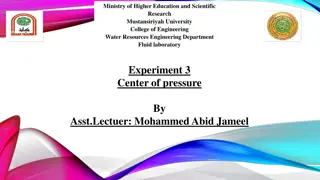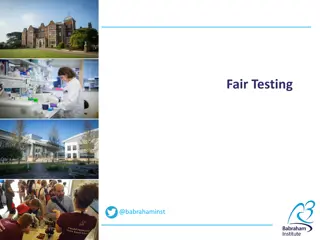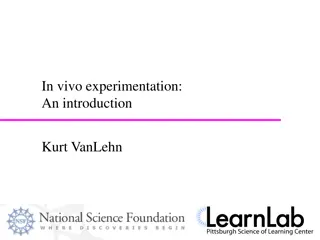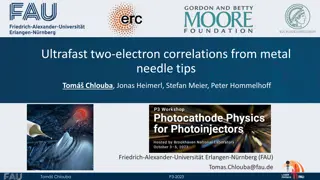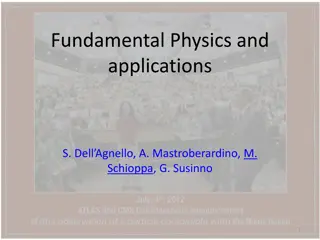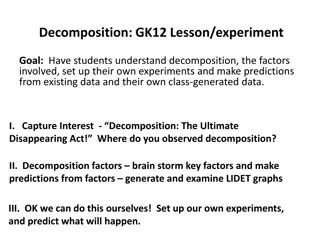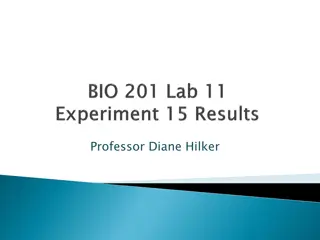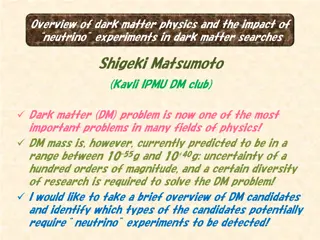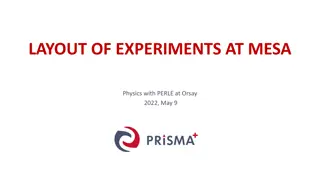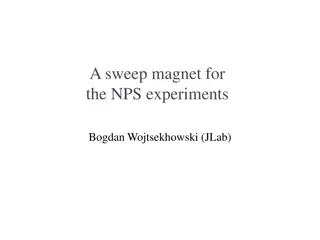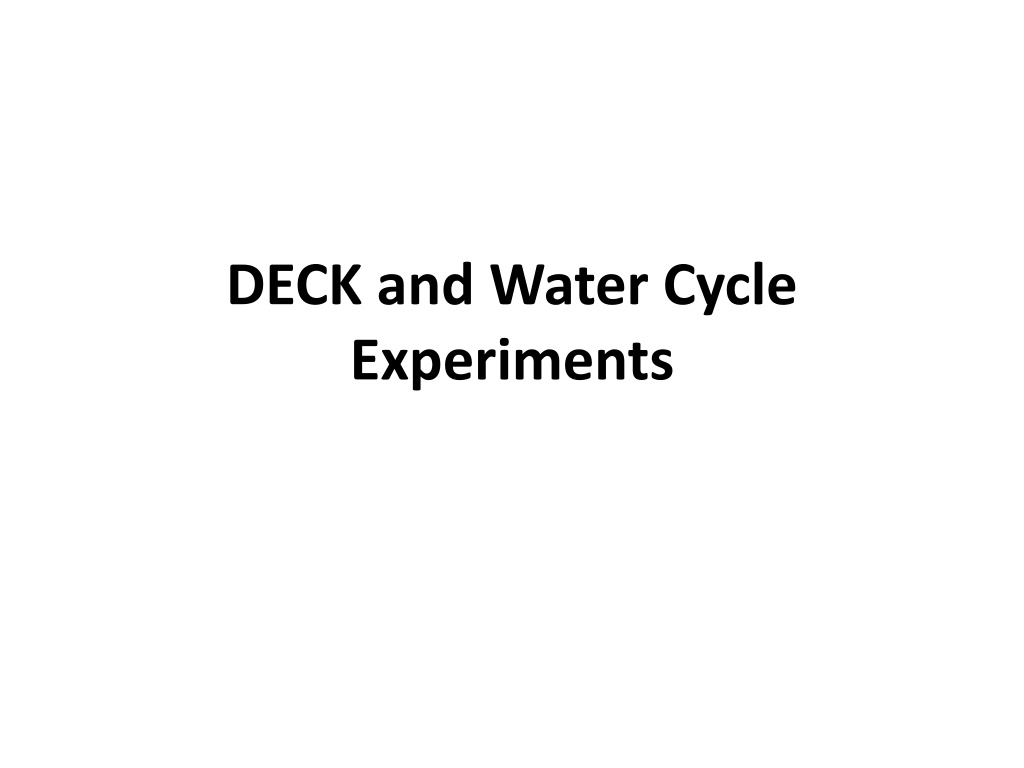
Water Cycle Experiments and Simulations Analysis
This comprehensive content delves into the DECK experiments and low-resolution simulations related to the water cycle, focusing on various scenarios, forcings, and strategies impacting water cycle changes. It discusses the effects of different model resolutions on simulations, initialization methods in coupled simulations, and the evaluation of simulated processes. The content also explores how increasing model resolution may enhance simulations and the dominance of forcings in past and future water cycle changes.
Download Presentation

Please find below an Image/Link to download the presentation.
The content on the website is provided AS IS for your information and personal use only. It may not be sold, licensed, or shared on other websites without obtaining consent from the author. If you encounter any issues during the download, it is possible that the publisher has removed the file from their server.
You are allowed to download the files provided on this website for personal or commercial use, subject to the condition that they are used lawfully. All files are the property of their respective owners.
The content on the website is provided AS IS for your information and personal use only. It may not be sold, licensed, or shared on other websites without obtaining consent from the author.
E N D
Presentation Transcript
DECK and Water Cycle Experiments
Water cycle science questions What forcings dominate water cycle changes in the past and how may this change in the future? Does increasing model resolution improve simulations of water cycle processes and how? How well/much do variable resolution simulations reproduce the global high resolution simulations of water cycle processes? What are the pros and cons of different strategies for initializing coupled simulations and how do they affect water cycle simulations?
DECK experiments (low resolution - LR) LR PI control: 500 years of simulation with PI forcing (1 member) LR historical: branch off after 300 years of PI control for another 165 simulations with historical forcings out to 2015 (3 ensemble members) LR 4xCO2: branch off after 300 years of PI control to abruptly increase CO2 to 4xCO2 for 150 years to 2000 (1 member) LR 1%/yr CO2 increase: branch off after 300 years of PI control to increase CO2 by 1%/yr for 150 years to 2000 (1 member)
Water cycle: LR simulations LR PI control-A: simulation initialized from CORE-II MPAS low resolution ocean/ice run with 1850 climatological forcing for 100 years (this is different from LR PI control in the DECK experiments) LR transient with all forcings-A: initialize using LR PI control-A on year 1950 with all forcings for 100 years (1950 2050) (3 ensemble members) - first 20 years used as adjustment LR transient with GHG-only forcing: initialize using LR PI control-A on year 1950 with GHG-only forcing for 100 years (1950-2050) (3 ensemble members) - first 20 years used as adjustment LR transient with GHG+aerosols only forcing: initialize using LR control-A on year 1950 with GHG+aerosols only forcing for 100 years (1950-2050) (3 ensemble members) - first 20 years used as adjustment LR transient with all forcings-B: initialize using CORE-II MPAS low resolution ocean/ice run with historical atmospheric forcing for 100 years (1950-2050, first 20 years used as spinup) LR transient with all forcings-C: extend LR historical (from DECK) for 2015-2050 Total = 100 + 100x3 + 100x3 + 100x3 + 100 + 35 = 1135 years
Water cycle: High resolution (HR) simulations HR PI control-A: simulation initialized from CORE-II MPAS high resolution ocean/ice run with 1850 climatological forcing for 100 years HR transient with all forcings-A: initialize using HR PI control-A on year 1950 with all forcings for 100 years (1950-2050) (1 member) - first 20 years used as adjustment HR transient with all forcings-B: initialize using CORE-II MPAS high resolution ocean/ice run with historical atmospheric forcing for 100 years (1950-2050, first 20 years used as spinup) Total = 100 + 100 + 100 = 300 years Extend to 3 ensemble members in 2018
Water cycle: Variable resolution (VR) simulations VR PI control-A: simulation initialized from CORE-II MPAS variable resolution ocean/ice run with 1850 climatological forcing for 100 years VR transient with all forcings-A: initialize using VR PI control-A on year 1950 with all forcings for 100 years (1950-2050) (1 member) - first 20 years used as adjustment Total = (100 + 100) x 2 regions = 400 years; the two regions with refinement are over the US and Asia Extend to 3 or more members in 2018
Analysis Science question (1) will be answered only using low resolution simulations by comparing the various LR transient simulations with different forcings initialized from LR PI control-A for 1970-2050. Science question (2) will be answered by comparing HR and LR transient with all forcings-A and all forcings-B for 1970-2010 with observations. Science question (3) will be answered by comparing simulations with all forcings-A for VR in the low resolution region with global LR, and VR in the refined region with global HR for 1970-2050. Science question (4) will be answered by comparing (a) LR PI control and LR PI control-A; (b) LR transient all forcings-A, all forcings-B, and all forcings-C; (c) HR transient all forcings-A and HR transient all forcings-B for 1970-2050.


